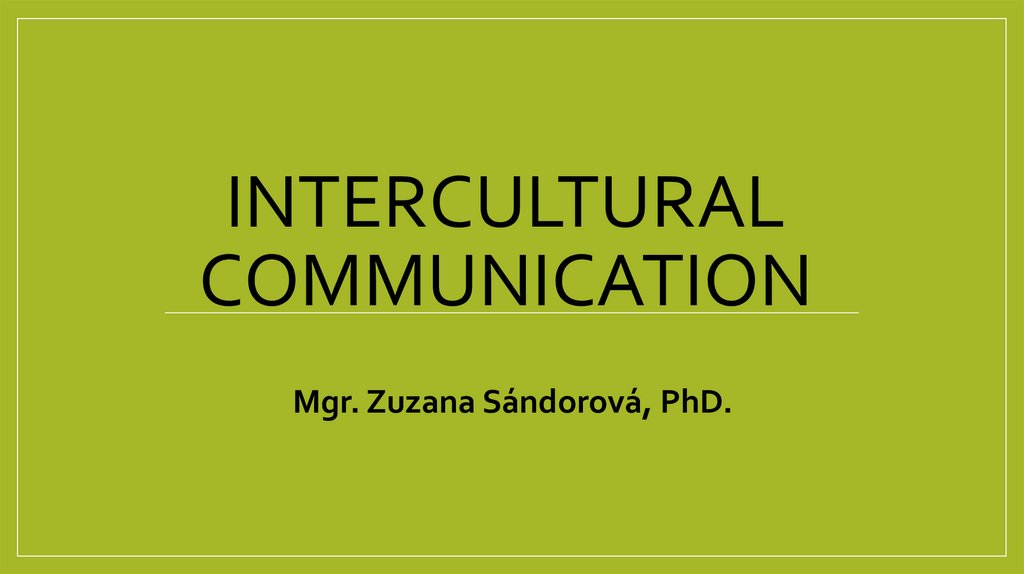Похожие презентации:
Intercultural Communication
1. INTERCULTURAL COMMUNICATION
Mgr. Zuzana Sándorová, PhD.2. Introduction
‘The phenomenon of intercultural communication is as old as human society’
(Damen, 1987, p. 23).
The first human beings can be considered the first intercultural communicators
when meeting other groups of their kind during their wandering from cave to
cave.
The Bible is full of events describing interaction between different nations and
intercultural communication played a crucial role during the Age of Discovery
(Hidasi, 2004).
3. The concept of intercultural communication
Gudykunst (2002, p. 183): ‘communication between people from different
cultures’.
Agreement on the conceptualization of intercultural communication between
different scholars (Hidasi, 2004):
1.
Hidasi (2004): an interaction between people belonging to different cultural
communities.
2.
Róka and Hochel (2009): we can talk about intercultural communication if at
least two people coming from different cultures exchange verbal and nonverbal
messages.
3.
Kramsch (1998): communication between people with different ethnic, social
and national backgrounds in various ways.
4. The concept of intercultural communication
Reynolds and Valentine (2004): intercultural communication occurs between people
with different cultural backgrounds, coming either from different countries or the
same country.
Byram (1991, p. 22): intercultural communication usually takes place either :
1.
‘between people of different languages and countries where one is a native
speaker of the language used’; or
2.
‘between people of different languages and countries where the language used is
lingua franca’;
3.
or ‘between people of the same country, but different native languages, one of
whom is a native speaker of the language used’.
5. Cross-cultural or intercultural?
Kramsch (1998): used interchangeably, both referring to the meeting of at leats
two cultures or two languages across the political boundaries of nation-states’
(ibid., p. 81).
However, intercultural communication can also occur between individuals of
different social or ethnic groups within the same official language.
6. Intercultural communication as a field of study
A young academic discipline;
Emergence: publication of Edward T. Hall’s The Silent Language in 1959 which offered
the first explanation of the connection between culture and communication.
The need for the establishment of intercultural communication as a scholarly field
occurred during the Second World War, and after its end: a lot of development
programmes in the United States failed due to the lack of intercultural knowledge and
awareness.
The first textbook on intercultural communication: An Introduction to Intercultural
Communication by John C. London and FathiYousef in 1975.
The next decades: a boom due to the work of William B. Gudykunst, Edward T. Hall,
Geert Hofstede, Florence R. Kluckhohn and Fred Strodtbeck, as well as Fons
Trompenaars.
7. The importance of intercultural communication
Liu et al. (2011) mention four reasons why intercultural communication is
important:
1.
To come to terms with the increasing diversity of the population, i.e., the
multiculturalism that a lot of countries face today;
2.
To facilitate cross-cultural adaptation, especially in terms of migration;
3.
To make international business exchanges successful;
4.
To maintain effective working relationships at multicultural workplaces.
8. Barriers to intercultural communication
1.Ethnocentrism
2.
Attitude
3.
Stereotypes
4.
Prejudice
5.
Perception
6.
Interpretation
7.
Language
8.
Culture shock









 Культурология
Культурология








